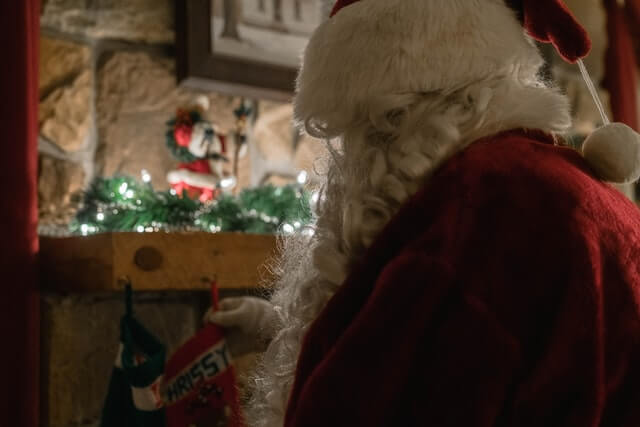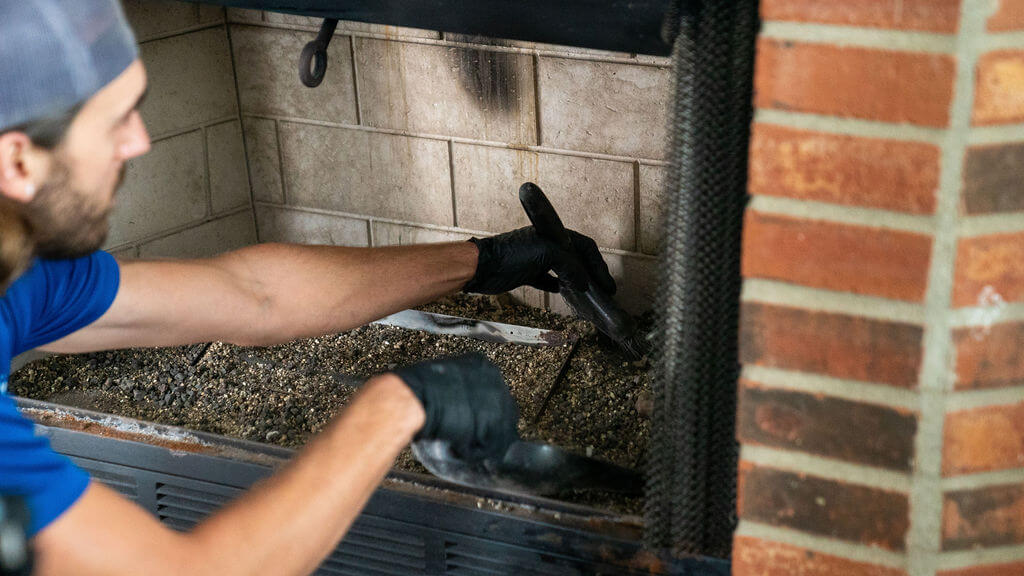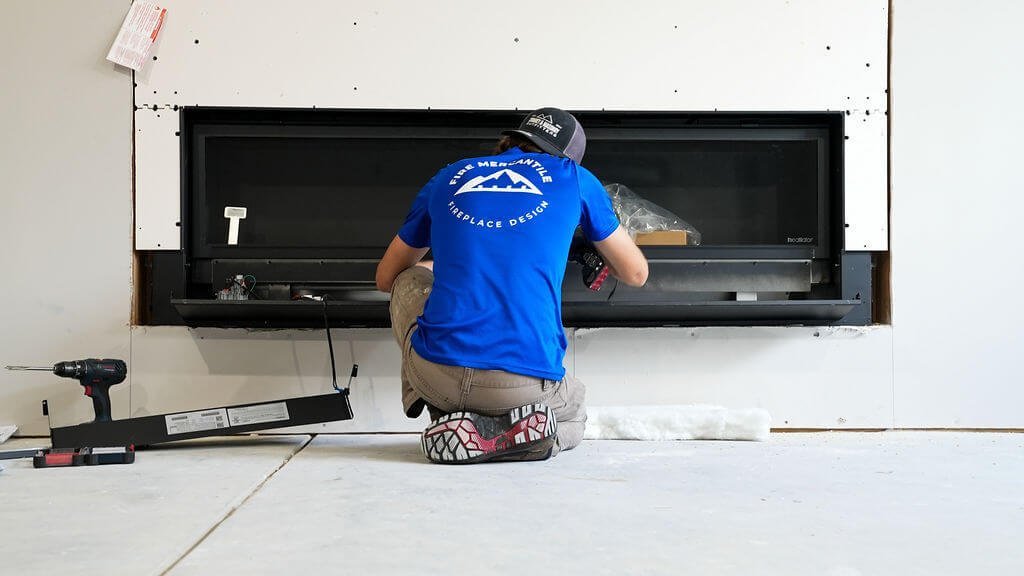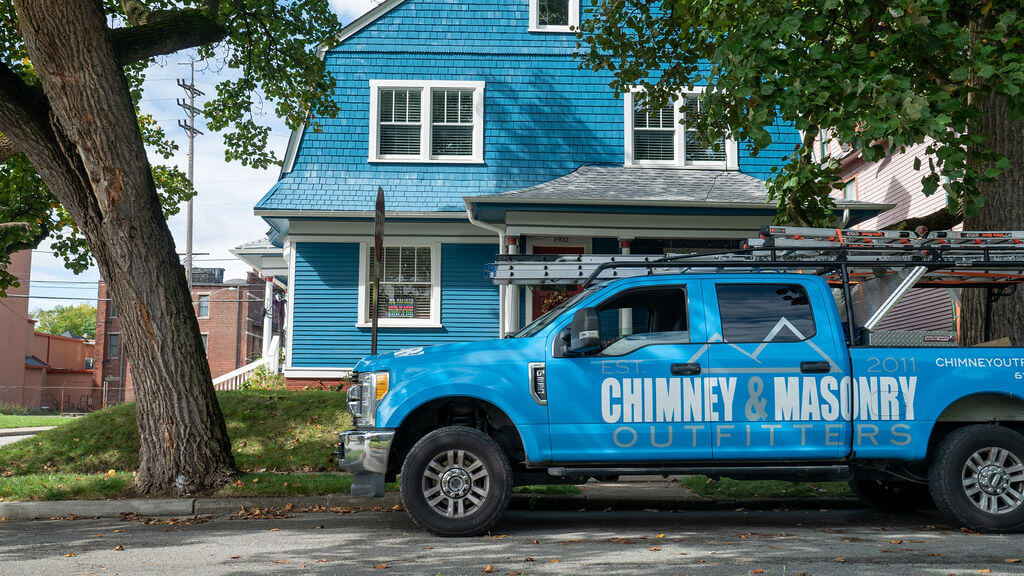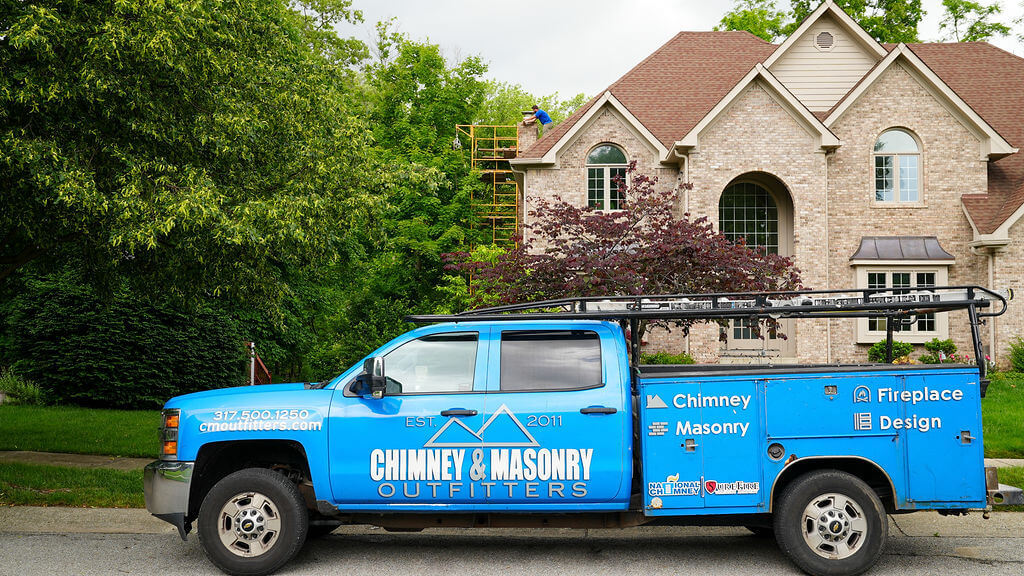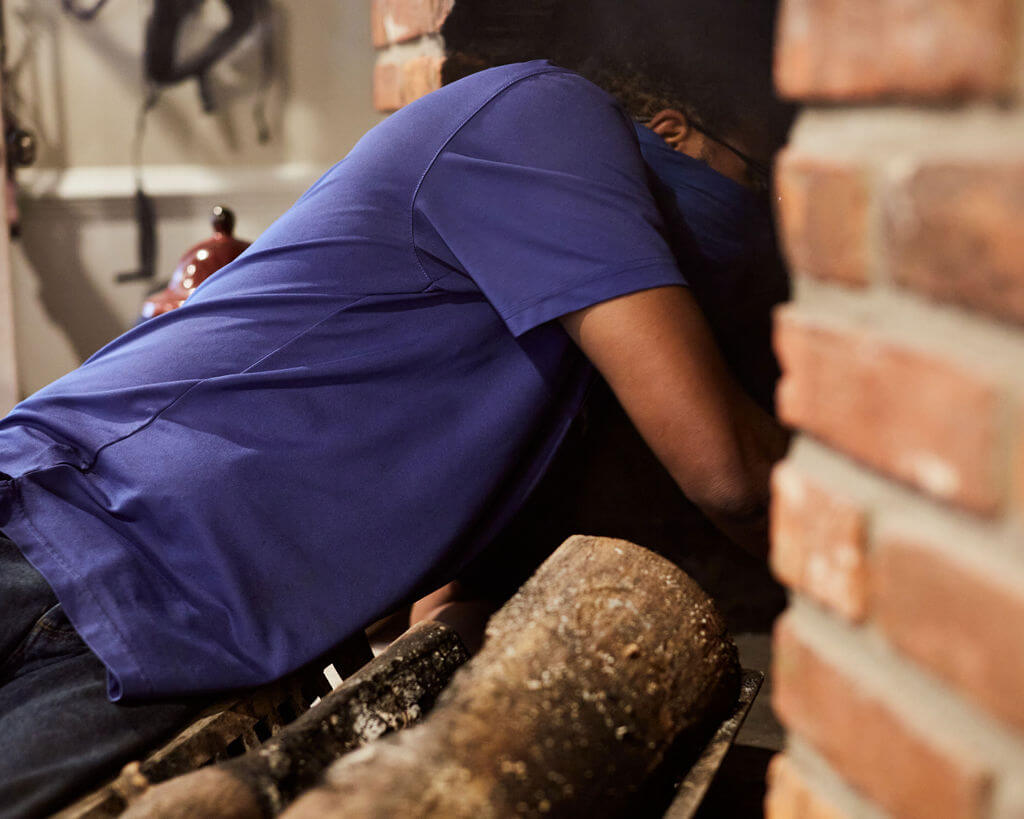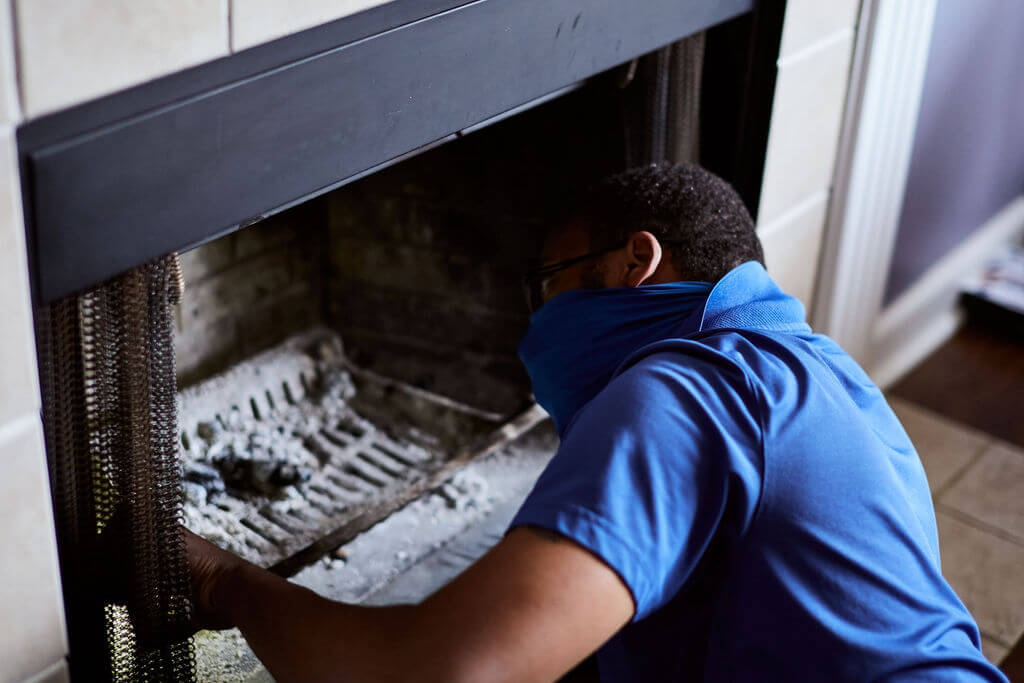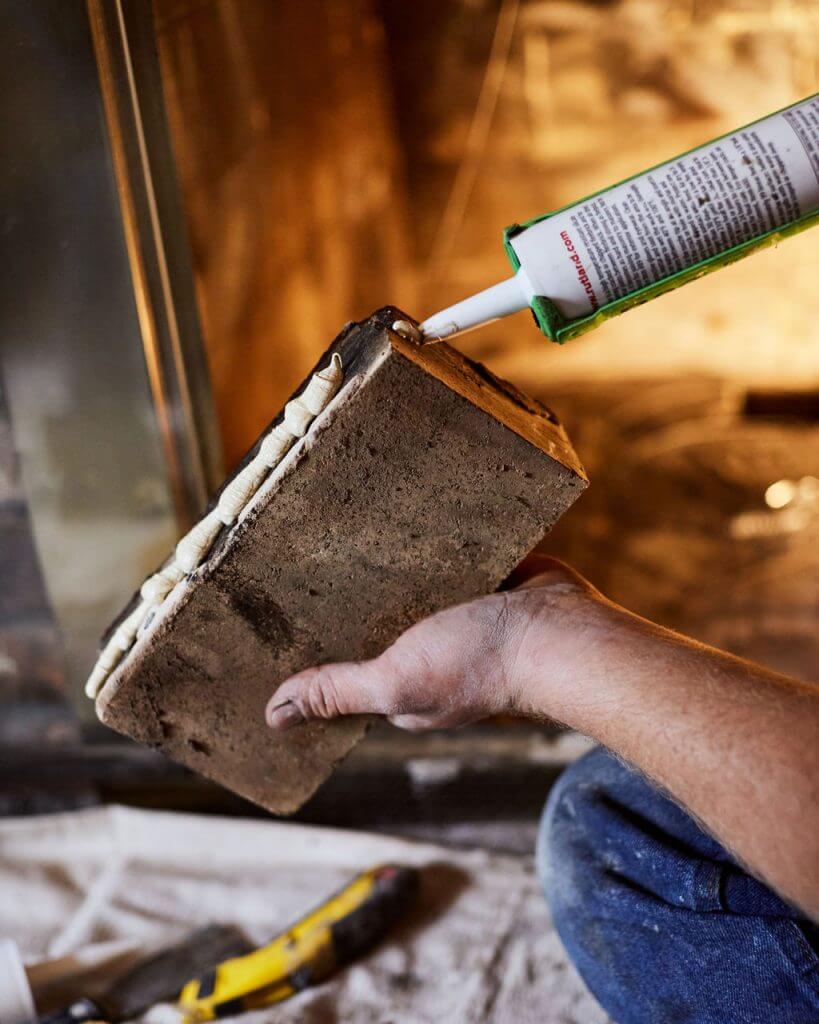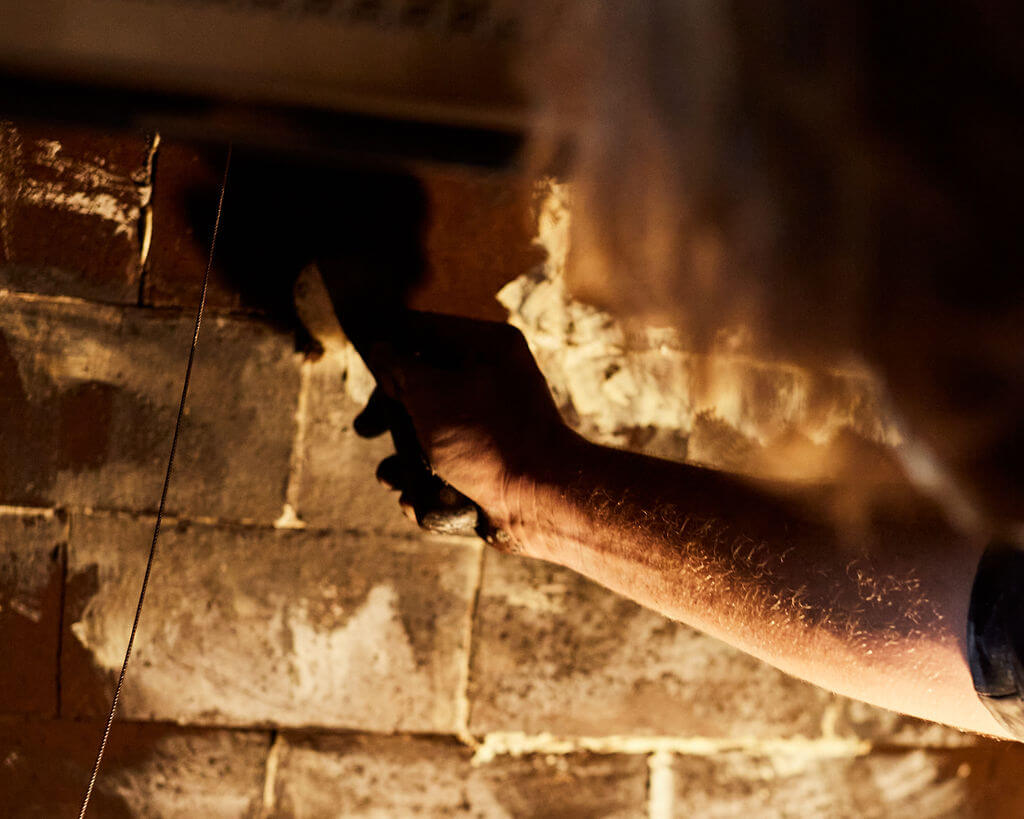What Fireplace is Best for Your Home
What fireplace is best for your home. With so many options out there for fireplaces, choosing the best one for your home can be difficult. The three main options that are out there are wood-burning, electric, and gas fireplaces. There are a lot of differences between them and the best option will depend on your specific need.
With this in mind, below are the pros and cons of each option. After deciding on the best option for you, we’ll also go through the best way to get the ball rolling on a new fireplace in your home!
Wood-Burning
Wood-burning fireplaces are the most common option. As the name implies, the heat source from this fireplace comes from burning wood. Fireplaces and wood stoves offer a reliable source of energy and a big aesthetic value.
Pros
- Reliable source of energy: Wood is a tried and true source of heat and energy.
- Aesthetic value: These are the fireplaces of our childhoods a lot of times. A big fireplace with wood burning in it feels cozy.
- Potentially free fuel: Depending on your location and surroundings, there may be an abundance of wood already around you. This means that you would essentially be able to fuel your fireplace for free.
Cons
- Creosote: Fire lets off a toxic chemical known as creosote when it burns. As this cools in the chimney, it settles on the walls. This leaves a potential for fires or the blocking of your flue.
- Spacious: A fireplace takes up a lot of room. In addition to the hearth and firepit, it also requires a chimney for the smoke to escape.
- Upkeep: Wood-burning fireplaces require a lot of upkeep. These range from chimney inspections and sweeping to masonry and mortar repair.
Electric
With an Electric fireplace, the flames are nonexistent. A screen will display a fire while the heater blows warmed air into your home. These will need to plug into an electric source
Pros
- Customizable: An electric fireplace allows the owner to customize the size and, often, type of fire displayed. These also provide the option for the fireplace to display without any heat coming out or vice versa.
- Safety: Since there’s no actual fire, these are a much safer option for families with children or pets. The glass displaying the fire will never actually get hot and there’s considerably less risk of fire.
- Easy to Install: An electric fireplace requires only a source of electricity to plug into. Homeowners can install these anywhere they should so desire.
Cons
- Not as powerful: An Electric fireplace will not produce as much heat as a gas or wood-burning one.
- Power Source: Plugin installation may seem like an easy method. Indeed it is if the power source is already there. If there is no power source where you would like the fireplace, homeowners will have to install one. This can be an expensive additional cost.
- Utility Cost: If you’re largely dependant on these for heat, the cost can rack up on the electric bill.
Gas
A gas fireplace tries to bring the ambiance of a wood-burning fireplace and clean it up. Using a propane or other natural gasses, these produce a flame which is the heat source. These often include fake logs to give a similar impression aesthetically.
Pros
- Easy to Start: A simple flip of the switch and your fire will be roaring. No more need for kindling.
- Cleaning: A gas oven is much easier to clean since it doesn’t case a chimney in soot like a wood-burning fireplace.
- Aesthetics: Aside from a wood-burning fireplace, it can’t get better looking than a gas-powered fireplace.
Cons
- Expensive: Gas fireplaces are more expensive to install than electric ones. Depending on your home setup (e.g. if you already have a chimney,) it may be more expensive than a wood-burning fireplace as well. After the initial installation, the costs to maintain aren’t very high.
- Venting: While a gas fireplace is flexible in its placement within homes, it still requires a vent for off-gasses. With a gas fireplace, this will be a simple PVC pipe through the wall as opposed to a big chimney, however. So it’s still quite versatile.
Get Started
Now that you know more about which option is best for you, the next step is to get the process started. Whether you feel like you know which is best for you already or you still have questions, the team at Fire Mercantile is here to help.
Our dedicated team of professionals will meet with you, choose your custom design, and schedule your installation. We work on your timeline so as soon as you’re ready to commit to a design, we’ll be ready.
Contact us today by visiting us online. You may also reach us via e-mail at office@brickandember.com or by phone at (317)527-1250.
Whatever fireplace is best for you, we’ll be there to get it ready for you to enjoy!
Is Your Chimney Safe For Santa?
Is your chimney safe for Santa? As the big day draws near, the importance of keeping your chimney safe for Santa’s arrival is only growing. While there are always risks to traveling down the chimney, there are things we can do to improve safety for Santa.
Some ways that we can help to keep our chimney safe for Santa are:
Clear the Roof
Making sure that the roof is clear of tree limbs and other debris ensures a clear landing for Santa. It is important to keep any foliage or branches at least 15 feet away from the chimney. Sleighs can travel well in snow but not so well over branches.
In addition to helping Santa, this also helps protect the home on the morning of Christmas. As the fireplace gets going, there is always a possibility that embers can travel up through the chimney. These then have the potential to catch any brush on fire that may be on the roof.
Chimney Cap
While Santa will have to maneuver around your chimney cap, keeping it on your chimney is vital. Without the Chimney cap, critters and debris can enter the chimney. This has the potential to block the flue on the way down, rendering it impossible for Santa to continue.
This is vital for reasons beyond keeping the chimney clear for Santa as well. A blocked chimney can be very hazardous and debris catching on fire further up in the flue can also be very harmful. Keeping a cap on the chimney is the best way to prevent this from happening.
Check the Mortar
Homeowners should ensure that the entire chimney remains sealed off from the elements. Over time, the mortar that keeps the chimney together can wear out, opening holes in the flue. As visited above, this can lead to debris and animals entering the chimney and blocking it. Rendering Santa stuck.
It’s important to make sure that you are inspecting the worthiness of your mortar every year.
Flashing
The flashing surrounds the chimney and protects it from letting in moisture. As the snow starts to fall, it’s important to make sure that the flashing is intact and not letting in any water. This helps to make sure that Santa doesn’t get his suit wet and grimy.
In addition to this, a leak in the chimney can lead to water spots on the ceiling, mold, and other issues. Making sure that your flashing is up to code is the number one way to prevent this.
Chimney Inspection
The best offense is a good defense! Getting your chimney inspected every year is the best way to ensure that you are maintaining a safe entryway for Santa. A chimney inspection is a quick and reliable way to find out if there are any issues with your chimney.
Hiring a professional like the ones at Brick + Ember Outfitters will give the confidence that your chimney is in good standing. Go confidently into the season, ready to heat your home throughout the winter!
Other Holiday Tips
Throughout the holidays, there are a few other things to consider to keep your chimney and house safe! These tips can go a long way in ensuring a safe and festive season. As the holidays go on, please keep in mind the following:
Don’t Burn your Christmas Tree
Pine contains higher levels of creosote than other forms of wood. Burning your tree in the fireplace can release higher levels of dangerous chemicals into your home.
Don’t Burn Boxes and Wrapping Paper
Like the Christmas tree, it is wise to keep these out of the fireplace. They can burn quickly and unpredictably, making them more dangerous than standard wood. The ink on these also includes hazardous chemicals when burned so any colored paper should not get burned.
Keep your Fireplace Clear
The mantle is the pride of many homes but it’s important to keep the space clear. Decorations should stay at a safe distance from the flames.
Maintaining Home Safety
Always maintain smoke and carbon monoxide detectors. These are the first line of defense if anything goes wrong. Check these regularly and make sure to replace the batteries as needed.
We’ll Help Keep Your Chimney Safe
Santa Clause is a-coming to town so now is the time to prepare for his arrival. The team at Brick + Ember Outfitters is here to help! Schedule your inspection today.
After the inspection, our staff can directly address any concerns that there may be with your chimney. From there we can form a plan to address them quickly and efficiently. We handle everything from design and masonry to chimney sweeping and repair.
We take pride in our work and in helping people enjoy the favorite parts of their homes! Our dedicated team of professionals is happy to come out and ensure that you have a Chimney that’s good enough for Santa!
How Can I Tell If My Chimney Needs Cleaning?
How can I tell If my chimney needs cleaning? Chimney cleaning is a necessary part of maintaining a home and fireplace. A properly cleaned chimney will last longer and provide a much more enjoyable experience when being used all winter. Not only is it important for the health of the fireplace, but it also has implications for those living in the home as well.
While some recommend a threshold level of buildup (typically 1/16th of an inch) before needing a chimney cleaning, a yearly sweep is the best route. While this is the case for most, a chimney may be due for cleaning before that time if used more frequently. Luckily, some telltale signs may present themselves when a chimney cleaning is due.
It is important to familiarize yourself with these warning signs to prevent potential hazards that may pop up before a routine chimney cleaning.
Signs To Get a Chimney Cleaning
If you are experiencing one or more of these, you should consider scheduling an examination of your chimney immediately.
- Poorly-kept fires: Without the proper ventilation, fires will not keep lit as well or may burn oddly. If your fire is burning poorly or is taking more effort than normal to stay going, it may be a sign of a blockage in the chimney flue causing buildup.
- Campfire smell: If you detect the smell of fire coming from your unlit fireplace, it’s a good sign that it is due for a cleaning.
- A blackened damper: The fireplace damper is a small mechanism that works to block off the chimney flue whenever the fireplace is not in use. A blackened damper is a sign of creosote (a harmful byproduct of wood-burning fireplaces) buildup.
- Oily marks: if the walls look oily, this is another sign of creosote buildup.
- Smoke entering household: If smoke is escaping the fireplace and entering into your home in significant amounts, this could be a sign that there is not adequate ventilation in your flue due to a buildup of creosote.
- Evidence of animals: Sounds of scurrying feet or flapping wings may be an indication of animals making a home in your chimney--another issue that would require a chimney cleaner.
While some of these signs make themselves known to homeowners, others are only found when being looked for. It’s important to routinely check for things like oily buildups and blackened dampers which may present themselves in more subtle ways. Some build-up is normal but, if it becomes excessive, it may be time for an assessment by a professional.
The Importance of a Yearly Chimney Sweep
Creosote is a harmful chemical that is contained within the smoke that comes off of burning wood. As it travels through the flue, the smoke begins to cool, resulting in the creosote depositing into an oily substance coated on the chimney. This happens for every wood-burning fireplace.
As the buildup thickens, the problem compounds as the smoke takes longer to reach the top and, therefore, has a longer time to cool. While this is restricting the airflow of the fire and can result in smoke entering the home and getting on furniture and wallpaper, the issue can be far more harmful than that.
Creosote is highly flammable at high temperatures and could lead to a chimney fire or sparks flying out of the top and igniting the roof. Additionally, if it combusts, creosote-containing smoke can be sent throughout the house, resulting in the inhalation of large amounts of the harmful chemical.
Evidence shows that creosote is likely carcinogenic and harmful to breathe. In addition to this, it has been shown to cause rashes and other uncomfortable ailments. The chimney can become a storehouse for this dangerous substance and that is why it’s important to clean it out every year.
Some will schedule their chimney cleaning to be done at the end of the winter after it has been used the most. Others prefer to schedule it for the fall to ensure that the chimney is free of any debris or animals before the start of winter.
Whatever option works best for your household, it’s important to establish a chimney cleaning ritual and stick to it.
Professional Chimney Cleaning from B+E
Yearly chimney cleanings are a normal part of chimney maintenance but they don’t have to be a pain. Hiring a professional team like the one at Brick + Ember Outfitters to come and clean your chimney takes all the hassle out of the process. Within 30-60 minutes, we can have your chimney cleaned and ready to start making memories.
Whether it’s time for your chimney to be swept or you just would like an inspection, we’re here to help! The team at Brick + Ember Outfitters offers a dedicated staff of experts and a wide range of services to ensure that your chimney is in great health. Request an appointment today!
Can You Put a Fireplace Insert in An Existing Fireplace?
Can you put a fireplace insert in an existing fireplace? Open-air, wood-burning fireplaces have been the traditional choice but they are far from perfect. While some enjoy having an actual log burning in the fireplace, gas and electric fireplace inserts can be more efficient on both energy and space.
In addition to being more efficient, they are also safer as the flame is either contained or nonexistent depending on the model. Due to this, many find themselves wishing to replace their traditional fireplace with an insert.
The good news is that you absolutely can put a fireplace insert into an existing fireplace. The installation of which is often efficient and painless!
What is a Fireplace Insert?
Fireplace inserts are pre-made heating units that can be inserted into existing fireplaces. Many also have the ability to be used as standalone furnaces without a fireplace needed. They are traditionally gas or electric and come in a variety of shapes and sizes designed to fit into an existing structure or stand on their own.
Gas inserts run on natural gas or propane which is hooked up to the unit. Conversely, electric inserts utilize electricity to heat your home while displaying customizable images of flames.
Installing an Insert in an Existing Fireplace
Installing a fireplace insert in an existing fireplace is a quick process but one that carries some considerations. Depending on the type of fireplace it may require:
- A power source installed or nearby
- Different placement conditions (a certain amount of space required behind the fireplace, etc.)
- Different heat-proofing/sealing needs
Due to the different nature of various fireplace inserts, we’d recommend considering a professional for the task. Depending on the insert, it may still get very hot and be dangerous if placed incorrectly.
Benefits of a Fireplace Insert
There are a lot of benefits to a fireplace insert over a traditional fireplace. Both gas and electric fireplace inserts take up less space and are more efficient than wood-burning fireplaces.
Contemporary wood-burning fireplaces have big openings with a chimney flue for the smoke to escape. Through this inefficient system, 80-90% of the heat escapes out of the chimney along with the smoke and exhaust gases.
Gas and electric fireplace inserts are able to retain and utilize most of their heat. This increased efficiency comes from the fact that it holds most of its heat through a closed door as opposed to losing it in an open chimney.
Gas
A gas fireplace has the advantage of being able to be placed anywhere. Not needing an electrical outlet means that these will not have to have an electricity source nearby or installed.
Often these are direct-vent fireplaces, meaning air feeds the fire from outside of it and combustion gases are vented through a wall-mounted vent.Through this system, they can retain about 70% of their heat, making them extremely efficient.
The only downside of the gas fireplace insert is that they are able to get quite hot and could be a hazard for small children or animals Many also feature a safety measure which turns off the fireplace if certain levels of carbon monoxide are detected. While this is obviously helpful, it could be concerning if this happens during cold weather while relying on it for warmth.
Electric
Electric fireplace inserts are arguably the best option when it comes to placing an insert into an existing fireplace. This is for a few different reasons but, for starters, no vent is needed with an electric fireplace since there aren’t any actual flames involved. Electric fireplaces work by pulling in cool air nearby, warming it, and pushing the heated air back out.
The ability to heat without an actual flame carries with it the benefit of being a much safer heating source, particularly around children and animals. The flame effect and heat are both able to be managed by the homeowner either on the system or via remote control.
Unlike their gas counterparts, the glass on the electric fireplace will never be hot to the touch. The heat source by the vents can be a different story but anyone who ventures to touch the simulated flames will not be harmed!
An electric fireplace will need to be installed either next to a power source or along with a power source so they are a little less versatile. The downside of this is that if a power source is installed the fireplace will no longer be able to be used for wood again without removing that source.
Professional Fireplace Insert Installation with B+E
The fireplace is where the family gathers to visit and is often one of the most beloved features of a home. Whether deciding on an electric or a gas fireplace insert, the team at Brick + Ember Outfitters is here to ensure that it’s installed safely and correctly!
Request an appointment or give us a call at (317) 500-1250 to begin the conversation today! One of our outfitters can come out and assess your fireplace before recommending some options!
How Do I Know If My Top Mount Damper is Open?
How do I know If my top mount damper is open? Whether it's warming up on cold days or staying up for long nights, the fireplace is the pride of the house. As the colder season comes more and more upon us, homeowners are once again clearing off their hearths and getting the fireplace back up and running.
Understanding the way the top mount damper works is crucial to ensuring a safe fireplace. The top mount damper is an essential part of the chimney and could lead to dangerous or even deadly conditions if left closed during a fire.
Today, we’ll dive into what you need to know about your top mount damper and how to operate it.
The Purpose of a Damper
The damper keeps the cooled or heated air from your home from escaping out of the chimney flue. There are a variety of types of dampers that sit in different locations within the fireplace system, from just above the fire to on the very top of the chimney.
As the name implies, the top mount damper is the latter. Unlike other dampers which may sit at the base of the chimney, this one has the advantage of sealing off the top of the chimney, ensuring that nothing can enter the flue.
If left closed during a fire, the chimney would first fill up with smoke and then begin spilling out into the home. Aside from the obvious inconvenience of potentially getting smoke and soot all over your walls and furniture, breathing in the smoke can be dangerous.
The damper helps to release harmful contaminants from the fire out of your home. Smoke caries with it Carbon Monoxide, soot, and other harmful or harsh elements. All of which would be circling through your home if the damper is left closed.
For this reason, it’s important to ensure that the top mount damper is open before starting a fire. This is true for all dampers but especially important for the top mount damper where the homeowner may not know until the fire has already grown that the damper is closed.
How to check if my top mount damper is open
- Visually check
The simplest way to see is to look! Stick your head in the chimney and look upwards. If your top mount damper is open, you should be able to see some sunlight. If not, the damper is closed.
Additionally, top-mount dampers can be inspected visually from the roof if needed or preferred.
- Check for a draft
Stick your hand into the fireplace and see if you can feel a draft blowing through. If the damper is open, air might be circulating into your home from outside or vice versa. Additionally, you can listen to the sound of air rushing to verify that it is open.
While it is extremely dangerous to light a fire with a closed damper. Try lighting a piece of paper or a rolled-up newspaper and see if the smoke is pulled upwards. If the smoke is not pulled upwards by a draft, the damper is not open.
- Locate the controls
The easiest method for checking the damper is to locate the controls for your specific setup. With top mount dampers, this is usually a chain with a handle on it. Typically with top-mount dampers, “open” is the default mode. To close the damper, the chain must be pulled downward against a spring and lock.
Even if the other two checks point to your damper being open, finding the controls is crucial. While you may be able to see some daylight or feel a draft, there’s always a possibility that the damper is not opened all the way. If this is the case, the flue can fill up with smoke and eventually spill over into your home.
Occasionally, people may forget to open the damper before starting a fire. The controls become much more crucial to understand when there’s a fire already going in the fireplace. Though it’s never recommended to start a fire without the damper open, knowing where the controls are can be the difference between a minor inconvenience and a serious health safety issue.
Conclusion
A top mount damper can save untold sums of money every year on heating and cooling. In addition to that, it helps to prevent animals and debris from entering into your chimney flue while you aren’t using it. Because it closes off the top of your chimney flue, it must be opened before a fire is started in the fireplace to ensure the smoke can escape.
The easiest way to check your chimney flue is to acquaint yourself with the particular controls of your unit. For most top mount dampers this is a chain that can be pulled but every damper can be different.
Looking for a new top mount damper, maintenance on your chimney, or just advice and a helpful hand? Look no further than Brick + Ember Outfitters! Our dedicated, professional staff of experts are here to guide you through all things related to your chimney and masonry needs. Reach out to us today!
Chimney Chase Covers: Copper or Steel?
Chimney chase covers: copper or steel? All homes that are fitted with a prefab chimney or brick chimney should have a chase cover. Chase covers sit on top of the chimney as an external covering, providing protection against leaks and water damage.
While these can often be made of aluminum or other weaker metals, we highly recommend going either with either Copper or Stainless steel.
But which material is best?
Let’s dive deeper into the topic of copper vs steel chimney chase covers.
Why are chase covers important?
Simply put: a chimney is a hole in your roof. While we often think of the chimney for the utilization of smoke leaving our homes, if left uncovered, things can just as easily enter.
Chase covers are solid metal sheets with one or more holes that sit on top of the chimney, protecting it from these elements. This is not only beneficial for ensuring that you’re able to have the fire roaring even on a rainy day but it also helps keep out animals, leaves, and other debris that can be floating around outside.
A compromised chase cover means that your home will be exposed to all of these elements. Even if it’s only temporary, this can be a massive disturbance. That’s why copper and stainless steel are the essential choices for chase covers.
While the other options may seem cheaper at first glance, they are prone to replacement. Some of them may rust through, others may just not be able to withstand harsher weather conditions. Copper and stainless steel chase covers, by comparison, are a once-in-a-lifetime purchase.
But is one better than the other?
Stainless steel chase covers
The benefit of stainless steel over traditional aluminum chase covers is that it’s a much sturdier metal. While aluminum won’t rust, it’s less able to stand up to the harsher elements of the outdoor world and will still likely require maintenance.
With a stainless steel chase cover, the homeowner has the benefit of knowing they likely won’t have to ever buy another chase cover. Stainless steel is tough, it will not rust, and it will hold up against the elements of nature over time. The only downside is the cost.
Though that is still debatable because it requires a one-time cost. When dealing with chase covers, stainless steel is the minimum acceptable quality of metal for the job.
Copper chase covers
The main benefit of copper chase covers is the aesthetic value. There’s no denying that copper is a much nicer look than stainless steel. In addition to this, however, copper is an extremely sturdy metal that will also not rust. Copper is an objectively higher-quality metal than stainless steel as well.
For this reason, homeowners can expect to pay a premium to upgrade their chase covers to copper. This is the only real downside of copper. Even wealthier homeowners can find themselves complaining about the cost of a copper chase cover.
Copper is considered the highest quality material for chase covers. For many, it has been well worth the premium for the aesthetic value alone. For others, they enjoy the benefit of a higher-quality metal even if the stainless steel is a perfectly fine metal itself.
Conclusion
Regardless of which you choose, copper and stainless steel are the two best choices when considering a chase cover. While there are some benefits to copper, the main one is simply that it looks beautiful. Copper is often chosen for higher-value homes with a certain style. However, any house can enjoy the premium look of a copper chase cover.
As for whether one is better than the other, that is mostly a matter of opinion and preference. The look of a copper chase cover is well worth the premium as a one-time investment for some. For others, it’s important only that they have a sturdy cover that can withstand the elements and look is secondary to price.
There really isn’t a wrong choice between the two but the right choice is up to you!
Brick + Ember Outfitters has been delivering quality chimney maintenance, repair, and installation work and dedicated professionalism to homeowners for over 10 years. You can rely on our expertise to ensure a quality, well-sealed chase cover on your home that you will be able to love for the rest of your life.
In addition to our professional services, we will go over routine maintenance and upkeep advice to ensure that you’re getting the most out of your fireplace for years to come. Check out our work to take a look at some of the quality projects we’ve already completed! Whether your need is in chase covers, chimney sweeping, or any other chimney and masonry need, contact us today.
How to Identify a Qualified Chimney Sweep
How to identify a qualified chimney sweep. Maintaining the chimney and fireplace in your home is an important step to take to protect yourself and your family from incidents such as accidental fires and carbon monoxide poisoning.
However, it is not always easy to find a qualified chimney sweep who you know you can trust to take care of your home.
Scam artists may try to draw you in with unbelievably low prices, only to end up taking poor care of your chimney or making you pay extra to do unnecessary repairs.
We know what it takes to be a trustworthy, reliable, qualified chimney sweep. Here are a few things to look out for the next time you search for a chimney sweep.
Proper Certifications
The number one way to ensure you are hiring a qualified professional to sweep your chimney is by making sure they have a certification from the Chimney Safety Institute of America (CSIA).
The CSIA is a nonprofit organization that has dedicated its work to educating, training, and certifying chimney professionals and related industry professionals. They also work to raise public awareness about dangers that can arise from chimney fires and other chimney and venting issues.
A good place to start when searching for a sweep is to use the CSIA search function to find CSIA certified professionals within a given radius of your zip code.
If you find a potential chimney sweep without using the CSIA website, make sure you ask them for written documentation of CSIA certification. Sometimes the owner of a company is CSIA certified while the individual employees are not.
Another nonprofit organization that is a good indication of a quality chimney sweep is the National Chimney Sweep Guild (NCSG).
The NCSG is a trade association that provides education and advocacy for professionals within the chimney and venting industry.
While this is not an official certification, membership in the NCSG indicates that the chimney sweep is a professional who is dedicated to their chimney maintenance expertise. NCSG members stay aware of current industry best practices and the latest technologies.
Strong References and Reputation
Always try to ask for a list of references when you are searching for a chimney sweep.
If they will not provide you with any references, this could be an indication that they are not a qualified professional or that they do not have a great reputation with their past clients.
Contact their references to ask for a quick summary of their satisfaction level with the chimney sweep and their services.
Word of mouth can also be a great way to find trustworthy chimney sweeps and avoid those with poor reputations.
Ask your neighbors or other people in your local area who they or their friends have used for chimney services. Once you have a name of a chimney sweep from them, you can check that they are CSIA certified and have other strong references to back them up.
Proper identification is also an important part of finding a trustworthy professional to work with inside your home.
Most companies will provide their employees with identification badges, and they will most likely arrive at your home in a marked vehicle wearing the company’s official uniform.
Always ask for identification and make sure that it matches with the information you have for the company.
Liability Insurance
Ask about the company’s insurance policy. You want to hire someone who has full coverage liability insurance in the event that damage occurs to your home.
Since the chimney sweep will be on your roof and inside your home, it is essential to know exactly what their insurance policy covers and to only hire professionals who are fully insured to protect your home.
It is not likely that you will ever actually have to worry about chimney insurance coverage, but accidents do happen.
Hiring someone who has a full coverage insurance policy will give you peace of mind and ensure your home is safe and protected.
Hire a Qualified Professional Today
Having an annual chimney sweep done in your home is the best way to make sure your chimney is in the best condition it can be and that your home is protected from chimney fires.
Finding a qualified chimney professional doesn’t have to be hard.
At B+E, we have all CSIA-certified technicians on our experienced team, and we take great pride in maintaining community safety.
We want you to be able to sleep soundly at night with the knowledge that your home is safe and has a well-maintained chimney and fireplace.
Contact us today to work with a qualified chimney sweep!
The Importance of Smoke Chamber Parging
The importance of smoke chamber parging. One important area of your fireplace that you may not think about very often is the smoke chamber.
The smoke chamber sits just above the fireplace damper and is an open area where the fireplace first starts to channel smoke and other gases upward and out of the chimney.
Just like any other part of the fireplace, it can become damaged and need upkeep or repairs over time and should be considered when you are thinking about having maintenance work done on your fireplace.
Smoke chamber parging is a crucial part of keeping your fireplace in top condition and in line with any codes and regulations in your area.
What is Smoke Chamber Parging?
Smoke chamber parging is the most common repair done on smoke chambers.
Parge is another word that means smooth. To parge a smoke chamber, masons apply a layer of mortar to the walls of it.
The mortar helps to fix cracks and irregularities in the smoke chamber, and it also helps to correct structural issues. This is important to make sure your smoke chamber is in top condition and adheres to all code requirements.
There are two different methods chimney technicians use for smoke chamber parging: spray-on and cast-in-place.
With the spray-on parging process, the technician sprays a new coating over the existing surfaces of the smoke chamber to create a smooth and even surface over the entire structure.
Cast-in-place smoke parging involves applying new masonry over corbelled surfaces. It smooths out the surfaces, and it can really benefit older or damaged smoke chambers by strengthening them.
Why is This Process Important?
As a part of your fireplace, it is essential to keep the smoke chamber in excellent condition to avoid hazards or other serious complications from starting a fire.
There are three main reasons why smoke chamber parging is important and can save you a lot of trouble further down the road.
Irregular Smoke Chamber Construction
A smoke chamber that was poorly constructed may have uneven walls, which leads to easier buildup and accumulation of hazardous flammable material inside it.
Some of the common construction irregularities are bulging sections of mortar and poor placement of stones.
When a technician parges these irregularities, they get smoothed out and leave behind a more consistent and even surface. This helps with airflow, which greatly improves your draft and the overall efficiency of your chimney.
Older chimneys are especially prone to have smoke chambers that are constructed in ways that lead to a buildup of creosote and soot, so smoke chamber parging can protect older homes from fire hazards.
Cracks and Holes in Masonry
Sometimes masonry gets damaged over time. Cracks and holes can form inside the smoke chamber and allow air to escape.
These damages affect the draft and the way that it pulls smoke upward and out of the chimney. By parging and applying mortar to these gaps, they can be closed and you can prevent new cracks and holes from forming.
Code Regulation Compliance
Smoke chambers must be parged, according to most building codes. Homes that are older than the building code may still have smoke chambers that have not been parged.
Previous homeowners also may have found ways to avoid smoke chamber parging, thereby not complying with the codes.
In the event of a chimney fire, your house insurance is unlikely to cover damages if your chimney is not up to code, so it is essential to make sure the smoke chamber is parged and all other aspects of the chimney follow current building regulations.
When to Do It
The Chimney Safety Institute of America recommends that chimneys be inspected once a year.
Having your chimney inspected on a regular basis, even if nothing seems to be damaged, can ensure your chimney and fireplace are in the highest working condition.
Professional inspectors can check the condition of your smoke chamber and determine if the walls are smooth or if it is in need of parging.
A well-parged smoke chamber will still require regular cleaning to get rid of whatever buildup exists and keep it in working condition.
Schedule a Smoke Chamber Parge Today
Whether you have noticed changes and malfunctions in the way your fireplace functions or just want to check to make sure everything is working the way it should, a professional chimney inspector can give you peace of mind about the controlled fire in your home.
No job is too big or too small for us to handle when it comes to the safety of your fireplace and chimney.
Schedule an appointment today by filling out the form on our website, or give us a call if you have any questions related to smoke chamber parging or the inspection process.
The Pros and Cons of Chimney Installation
The pros and cons of chimney installation. Some people wonder whether it’s a good idea to install a chimney in their home. If you’ve always dreamt of having and operating a fireplace or wood stove, then the choice to build a chimney seems straightforward. But it may not be that simple.
A properly installed and maintained vent can help remove harmful smoke and fumes from your home. However, if it isn’t routinely inspected and cleaned at least once a year, a chimney can become a fire hazard. To help you make an informed decision, we’ve outlined the advantages and disadvantages of installing a chimney in your home.
What is Chimney Installation?
There are a few ways to install a chimney. For one, you could have it go through the roof or the wall. You could also opt for a masonry chimney made of bricks or stone that encompasses a metal chimney. No matter which method or design you choose, here are some things to consider when you’re planning your installation:
- A chimney’s purpose isn’t solely to draft a fire in a fireplace. It can also serve other heat sources that burn fuel, like a water heater or wood stove.
- The inner diameter of your chimney and pipe should be the same size as the outlet of whatever your connection is.
- A through-the-roof installation requires a hole in the center of your ceiling large enough for the chimney to go through. In contrast, the through-the-wall method offers more versatility in placement options and can operate from the ground, proving much safer than the roof.
- Straight vertical installation through the roof is more efficient, easier to clean, and produces less draft than a venting system with a bend, which tends to restrict draft or airflow.
- Venting through the roof requires a black stovepipe, while through-the-wall venting needs a class A chimney pipe.
- Chimneys should be tall and have a cap to prevent fires and other hazards, as well as avert pests and small animals from entering and making it their home.
Pros of Chimney Installation
The most significant benefit of installing a chimney is experiencing a cozy, warm fireplace on cold winter days without having to compromise the air quality in your home. You can comfortably use your fireplace or wood-burning appliance while the chimney safely removes smoke, hot gases, and other harmful particles produced by the fireplace. And not only are wood fireplaces and appliances a good source of heat, but they also can replace utilities in your home that depend on fossil fuels, thereby reducing your energy bill and carbon footprint.
A less conspicuous benefit of adding a chimney to your home is the aesthetic appeal factor. Whether you use brick or opt for the electric chimney, having a chimney can add a classy, sophisticated look to your home, which may increase the value of your property.
Cons of Chimney Installation
Even though a chimney can be a beautiful and practical addition to your home, it also has the potential to be very dangerous and costly. Fireplaces, for one, can cause the accumulation of debris, including a sticky, toxic substance called creosote. That buildup can lead to a chimney fire if the chimney is not properly maintained.
Also, installing a chimney in an already built house can get expensive. And if it’s not installed correctly or well-maintained regularly, you can end up spending more money on repairs and damages. Even if you do not use a fireplace or stove, once you install a chimney, it’s best to get into the habit of having a professional inspect and clean it at least once a year.
Professional Chimney Installation is the Key
You may think you can save money by purchasing a chimney system and installing it yourself. However, if the installation is inaccurate, you risk damage to your home and high costs for repairs and replacements. Plus, you may lose your warranty on the system for not installing correctly. Hiring a trained professional can save you time and money and protect that warranty with their expertise, equipment, and experience.
When it comes to chimney installation, there are regulations and recommendations to follow in order to minimize the risks of using a fireplace or woodstove. Besides ensuring you have the correct fitting, a professional will also guarantee your chimney adheres to all building codes. Therefore, working with a chimney installation service is essential for peace of mind, knowing you can use your fireplace or wood stove safely.
Brick + Ember Outfitters is Here to Help
Adding a chimney to your home can be a big investment. With our help, you can save energy and money, increase your property value, and have cleaner air quality. So if you’re ready to upgrade your home, contact B+E today. We will take you through the entire process to accommodate your preference in installation methods.
Is a Chimney Sweep Necessary for Winter?
Is a chimney sweep necessary for winter? Most people start lighting their fireplaces as the weather gets chilly. Who doesn’t enjoy snuggling by a roaring fire on a cold, dreary night? A fireplace can be a functional space that creates a warm, pleasant atmosphere in your home. But without proper maintenance, it can be hazardous and cause severe damage.
Winter may be weeks away, but it’s never too early to get your home winter-ready. Adequately preparing your home should include a professional chimney inspection and cleaning. Even if you don’t use your fireplace, it’s essential to check your chimney annually, preferably before the coldest months of the year.
Here, we’ll discuss why it is necessary to schedule chimney sweep services for the upcoming winter season.
Avoid a house fire
Imagine you didn’t clean your chimney and its components regularly. In a wood-burning fireplace, the chimney and its flue usually funnel out toxic gases, smoke, tar fumes, water vapors, hydrocarbons, and other byproducts of burning wood. But without a thorough sweeping, all of those harmful elements would accumulate inside the chimney.
When those particles meet cold air, that reaction forms an oily, flammable substance, creosote, along the chimney walls. Once that happens, your risk of a house fire increases. If you want to avoid such a dangerous situation, hiring a chimney sweep before the weather cools down is your best option.
A gas fireplace can also cause an explosive house fire if you neglect its maintenance. You don’t have to worry about creosote buildup in a gas fireplace, but you do have to be on the lookout for faulty components. With an appropriate amount of time, a chimney sweep can make the necessary repairs and remove obstructions that pose a fire risk so you can have a working fireplace when you need it most.
Eliminate the risk of carbon monoxide poisoning
If you attempt to use your fireplace without executing a routine inspection, you risk not only a chimney fire but also carbon monoxide poisoning. Before the cold hits, a sweep will be able to easily remove any obstructions that may block fumes from traveling outside your home. Getting a certified professional to check your chimney before the winter months ensures your safety from this odorless, tasteless gas.
Identify damage and enhance performance
Chimneys can sustain a lot of damage, especially during the winter. Heavy winds and precipitation usually batter the outside of the chimney, while extreme heat and harsh chemicals from the fire wear down the interior. Arranging an inspection with an expert earlier in the year gives you plenty of time to assess and address all chimney-related issues before the first snowfall.
However, if you decide to forgo a chimney inspection, you risk further damage to an already compromised chimney. By winter, snow and other moisture can seep into the cracks and broken seals, which could lead to highly expensive repairs in the future or render your fireplace unusable.
Instead, it would be more cost-effective to use a chimney sweep service. Not only will your chimney undergo careful inspection, cleaning, and repairs, but the sweep can also make helpful recommendations such as:
- How to build safe and efficient fires, which produce more heat and less harmful emissions;
- Which wood to burn to reduce poor air quality;
- What types of tools and equipment are necessary to maintain your fireplace; and
- How to decorate your fireplace without creating a fire hazard.
Avert water damage
Another reason to hire a professional before winter arrives is to secure your chimney from water damage. If any of the components that generally protect your chimney from water have deteriorated, a chimney sweep would be the ideal person to restore those components and re-seal any cracks or holes.
You may even want to discuss adding a waterproof solution or chimney cap with the sweep. That way, your chimney will be able to withstand any heavy precipitation like melting snow or freezing rain.
Improve air quality
The air quality in your home can have a significant impact on your health. That is why it is critical to ensure your chimney functions correctly during the winter when people spend more time indoors. And if you delay too long, your chimney can end up developing unpleasant odors from the blockages, creosote, water damage, and trapped fumes and smoke. Chimney sweeping can remove anything that may be causing terrible smells, thereby improving your home’s air quality.
Count on Brick + Ember Outfitters for your chimney sweep and inspection
If you want to take advantage of your fireplace all winter long, we suggest booking an appointment with our team of professionals right away. Delaying the process will make it more difficult to enjoy the perks of having a fireplace. Plus, it could end up costing you more in terms of money and your health. Let us help you get your fireplace ready for another winter. Contact us to schedule your chimney sweep and inspection today!


